

Stem cell treatment for dementia often considered a natural remedy, can cost up to $50,000 in the United States. Colombian medical centers offer the same innovative therapy for $8,000 to $16,000. This significant cost difference has made Colombian cities like Medellin and Pereira leading destinations for advanced neurological treatments and a potential cure for dementia.
Regencord’s specialized facility in Pereira offers complete stem cell therapy for chronic and degenerative conditions, including Alzheimer’s disease and Parkinson’s disease. The center’s care package includes an original evaluation, customized treatment plans, and follow-up care. Patient symptoms show improvement within weeks to months after treatment. Colombia’s 15-year-old regulatory framework maintains safety and ethical standards throughout the process.
We will explore why patients choose Regencord Pereira for stem cell treatment and what the therapy involves. The facility’s expertise, treatment protocols, and ground patient outcomes will help readers understand their options for treatment for dementia patients.


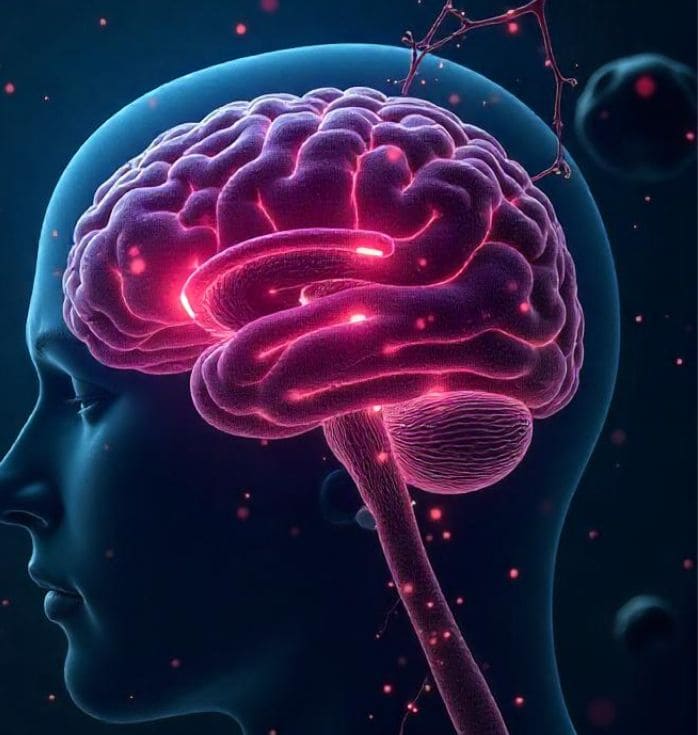
Dementia damages the brain and causes cognitive decline that affects millions of people worldwide. We need to understand how this condition changes brain function and how stem cells might help before we look at treatment options.
Dementia isn’t just one disease—it’s a group of symptoms that come from various conditions damaging brain cells. With dementia, the brain’s neurons can’t communicate properly. As the condition takes hold, many cells stop working and die, leading to brain atrophy.
Alzheimer’s disease, the most common type of dementia, first damages the hippocampus—the brain’s memory center—and the entorhinal cortex. The brain loses substantial amounts of cells as the disease progresses. This cell death leads to tissue shrinkage (atrophy). Different types of dementia affect various brain regions:
Chronic inflammation plays a crucial role in dementia. The brain's immune system cells, called microglia, don't work properly. These cells can't clear waste and protein buildups like beta-amyloid plaques and neurofibrillary tangles that mark Alzheimer's disease. The damaged cells release chemicals that harm the neurons they should protect, leading to neuroinflammation.
Stem cell treatment targets the mechanisms that cause dementia. Regular treatments just manage symptoms, but stem cells and dementia research suggest they might actually repair damage and promote brain regeneration.
Stem cells can turn into different cell types and keep making copies of themselves. These cells help dementia patients in several ways:
Animal studies show promising results for stem cell treatment in dementia. UC San Diego scientists found that mice receiving hematopoietic stem cells kept their memory and thinking skills. The treatment reduced inflammation and beta-amyloid buildup.
Stanford Medicine researchers made an interesting discovery in stem cell research for Alzheimer's disease. Blood stem cell transplants in mice reduced Alzheimer's signs by replacing bad microglia cells with healthy ones. UCLA scientists grew brain cells in large numbers that could work for patient transplants.
Human trials are still in the early stages, though results look promising. A recent phase I trial tested MSC injections in patients with mild to moderate dementia who had amyloid pathology. The treatment proved safe but didn't yet show major effects on cognitive decline.
Scientists still face challenges in developing stem cell treatments. They need to figure out which cells work best, how much to use, how to give the treatment, and how long it lasts. We have a long way to go, but we can build on this progress. Stem cell therapy could revolutionize dementia treatment by fixing its root causes instead of just treating symptoms.
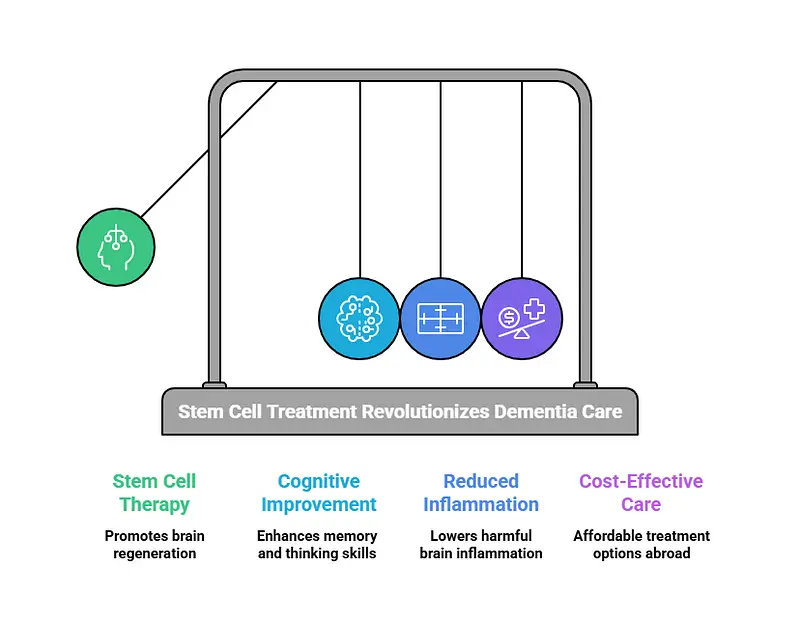
Colombia has become a top destination for stem cell therapy, drawing patients worldwide who need treatment for conditions like dementia. Patients choose Colombia because it offers affordable, quality care and innovative treatment options.
The huge price gap between Colombia and Western nations makes many patients consider getting treatment abroad. Stem cell treatment for dementia costs between $5,000 and $15,000 in Colombia, which saves patients 50-70% compared to Western countries. The same treatments in the United States cost between $20,000 and $50,000, and some sources report prices up to $100,000.
Lower operational costs in Colombia create this big price difference. The country keeps its medical care standards high while spending less on labor and facilities. Colombian clinics also offer complete treatment packages that include:
These all-inclusive packages give extra value to patients with chronic conditions like dementia.
Colombia's medical excellence rests on several quality pillars. The country has innovative technology facilities with highly trained healthcare professionals. Many Colombian doctors have trained at respected institutions worldwide.
The country follows strict rules to protect patients. Many top clinics have earned recognition from respected organizations like Joint Commission International (JCI) and ISO. These certifications show that facilities meet global healthcare standards for:
Colombian academic and research institutions work together with international organizations to advance regenerative medicine practices. This dedication to state-of-the-art research has made Colombia a leader in global stem cell therapy.
Patients travel to Colombia mainly because they can get treatments unavailable in their home countries. The United States falls behind in approving certain stem cell therapies. One source states, "The FDA heavily regulates the use of stem cells in the United States. The U.S. is in fact one of the last developed countries to welcome the use of this amazing treatment".
Rules differ between countries. U.S. regulations require stem cells to be used as harvested without changes. Colombian clinics can boost and grow stem cells to make treatments more effective. This flexibility lets patients access innovative therapies years before they become available at home.
Colombia also makes travel easy. Americans don't need a visa for stays up to 90 days. Direct flights connect major Colombian cities like Bogotá, Medellín, and Pereira to many U.S. cities, making the trip simple for international patients who need treatment.
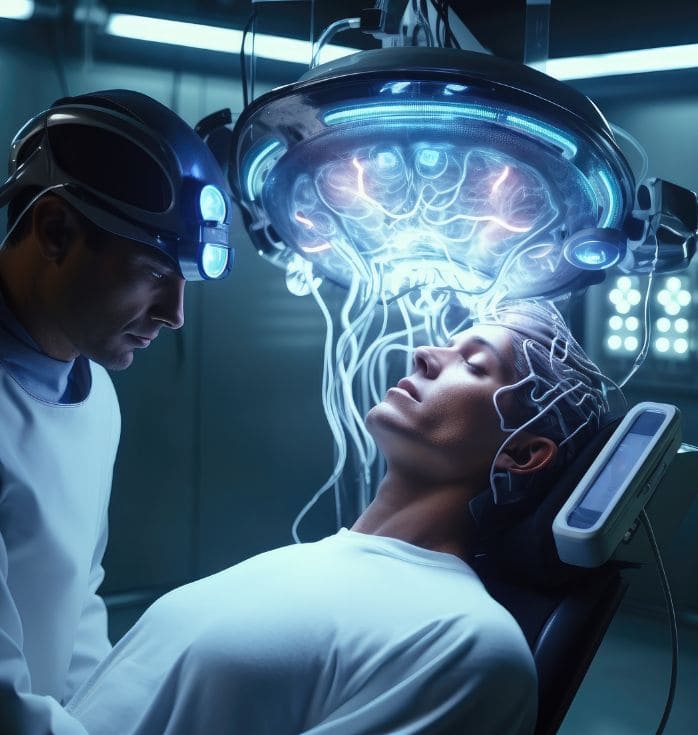
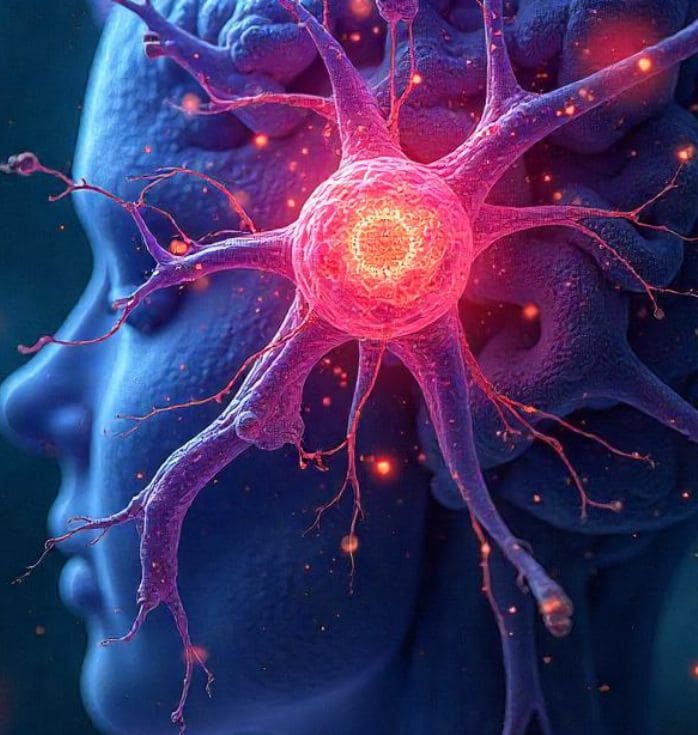
Regencord Pereira leads regenerative medicine in Colombia, with over a decade of specialized experience in stem cell therapies. The facility’s detailed approach to treating complex conditions like dementia makes it unique and attracts patients worldwide who seek innovative treatment options.
The founders bring exceptional credentials to dementia treatment. Dr. Julieta Henao Bonilla, a medical geneticist, has 42 years of experience in genome management and over a decade in biotechnology. Dr. Carlos Alberto Isaza Mejía, a physician pharmacologist, brings more than 40 years of university teaching and research experience at Minciencias.
The core team includes these specialists:
Regencord has successfully treated over 5,000 patients worldwide. More than 90% of patients achieved positive results, and zero serious adverse events were reported.
Regencord's facility stands out because of its in-house stem cell production capabilities. It produces all stem cells, including mesenchymal stem cells, in an advanced laboratory equipped with specialized equipment. Experts in genetics, pharmacology, biology, and bacteriology staff the facility.
The facility meets strict international standards, including:
These certifications ensure complete traceability throughout production. Patients can identify specific tests conducted on their cells. Their membership in the International Society for Cell & Gene Therapy (ISCT) keeps them updated with advanced stem cell therapy developments.
Patient-centered care forms the foundation of Regencord's approach. The medical team guides patients through every treatment stage with specialist, professional, and empathetic advice. If you have stem cell treatment for dementia, this detailed support covers everything from the original consultation through post-treatment follow-ups.
The facility's manager, Julian Alberto Isaza Henao, emphasizes their goal "to encourage confidence in both our national and international clients by continually improving our processes and adhering to the highest quality standard."
Science and research distinguish Regencord. Their dedicated research group consistently produces new knowledge, which helps advance regenerative medicine techniques specifically designed to help patients with neurodegenerative conditions like dementia.
Patients seeking stem cell treatment for dementia at Regencord Pereira follow a well-laid-out path that ensures safety and therapeutic benefits. Each patient receives customized care based on their needs. The clinic’s protocols have evolved through years of clinical practice.
A detailed evaluation sets the foundation for all treatment decisions. The medical team reviews the patient’s history thoroughly. They perform physical examinations and specialized neurological assessments to determine dementia severity and therapy suitability. Regencord’s team might request more diagnostic tests. These often include imaging studies that show brain function and structure, helping to assess the extent of cognitive impairment and memory loss.
This careful assessment helps the clinic’s scientific medical board create customized treatment plans based on each patient’s condition. Patients receive expert and caring medical advice that creates a comfortable treatment experience.
Eligible patients move to the treatment phase under strict quality standards. Regencord creates stem cells in its advanced laboratory under ISO-certified conditions to ensure quality and safety. The facility meets international standards like ISO 9001, ISO 13022, and ISO 22859, which provide complete tracking throughout production.
Dementia patients typically receive:
The critical follow-up phase begins after stem cell therapy. Regencord schedules regular appointments to track progress, review outcomes, and adjust treatment plans when needed. Regular monitoring shows how effective the therapy is over time, particularly in addressing cognitive impairment and memory loss.
Follow-up care goes beyond clinical checks. Patients get detailed care instructions after the procedure. These may include rehabilitation exercises that support recovery and boost treatment benefits. The medical team provides constant support, creating a peaceful and satisfying experience from the first consultation through all follow-up stages.
Regencord's approach to post-treatment care shows their steadfast dedication to supporting patients throughout therapy. They ensure physical and emotional support during recovery.

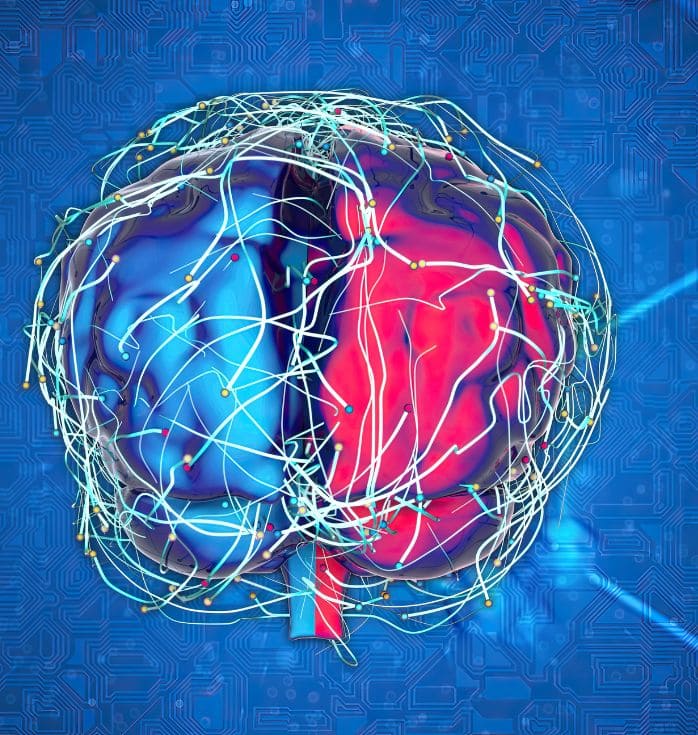
Stem cell treatments for dementia show their real effects through patient outcomes. Regencord Pereira’s documented cases and research findings tell this story clearly.
Regencord’s collection of testimonials reveals different results for neurological conditions. His stem cell therapy didn’t just help his knee problems—it also unexpectedly improved his arm mobility from a previous accident. Other patients saw their cognitive abilities get better after treatment for various conditions.
Clinical trials for Alzheimer’s disease paint a mixed picture. Some dementia patients notice real changes in their quality of life. Stanford Medicine’s research showed transplanted stem cells worked well to reduce typical Alzheimer’s brain abnormalities in mouse models, suggesting that stem cells can help Alzheimer’s disease.
Patients who get mesenchymal stem cell (MSC) therapy often notice these changes:
The treatment has its limits though. A phase I clinical trial proved MSC therapy was safe when doctors put it into the hippocampus and precuneus. The results didn't show any major effects on cognitive decline. One study even found cognitive decline happened faster after treatment compared to normal progression. First-in-human trials proved the treatment was safe, but we need larger groups and longer follow-ups to fully understand if stem cells can reverse brain damage.
Scientists continue to study long-term outcomes. The treatment seems to work best in early disease stages. A mouse study backs this up—12-month-old mice improved, while 15-month-old mice showed no improvement.
Timing makes a big difference. Early treatment leads to better results than waiting until advanced stages. UC San Diego researchers showed stem cell transplants helped with multiple Alzheimer's symptoms in mice. These transplants protected memory and cognition while reducing brain inflammation.
Research teams now focus on making treatment protocols better for dementia patients. They balance promising animal studies with ongoing human clinical trials to boost long-term effectiveness. This includes exploring how stem cells might regrow brain cells and promote neural repair.
Regencord Pereira’s stem cell treatment gives dementia patients new therapeutic options and hope. Research in this field keeps evolving, and early studies yield promising results, especially when patients start treatment sooner. The potential benefits of stem cell research for Alzheimer’s patients continue to drive scientific interest and investment.
The facility stands out as a prime choice for stem cell therapy because of its advanced setup, skilled doctors, and complete patient care approach. Thanks to its ISO-certified processes and Colombia’s budget-friendly healthcare system, patients can access advanced treatments at substantially lower costs than Western options.
Stem cell therapy shows great promise in treating dementia, but patients need to know what it can and cannot do. The treatments work best as early interventions, though ongoing clinical trials will reveal more about long-term results. As science moves forward and new research emerges, this therapy could become a crucial tool that targets dementia’s mechanisms instead of just managing symptoms.
We focus on knee treatment using stem cell therapy, focusing on three main processes:
Stem cells are unique cells with the ability to develop into various cell types and repair damaged tissues. They are used in regenerative medicine, including treatments for cancer, neurodegenerative diseases, and injuries. Sources include bone marrow, cord blood, and embryos.
(888) 540-4101
Begin your journey with us today! Call us at (888) 540-4101 or complete the form to learn more.


